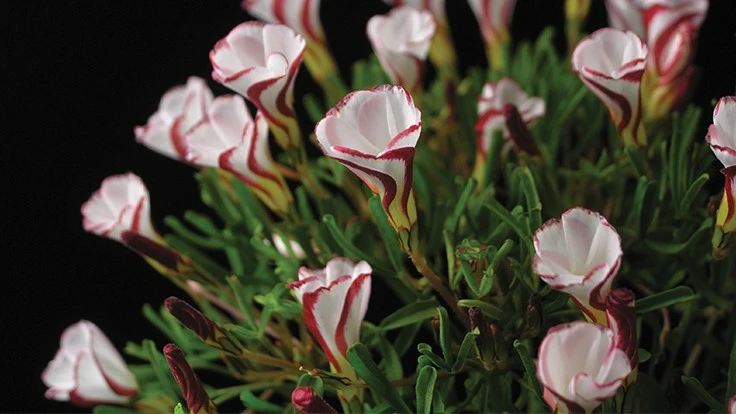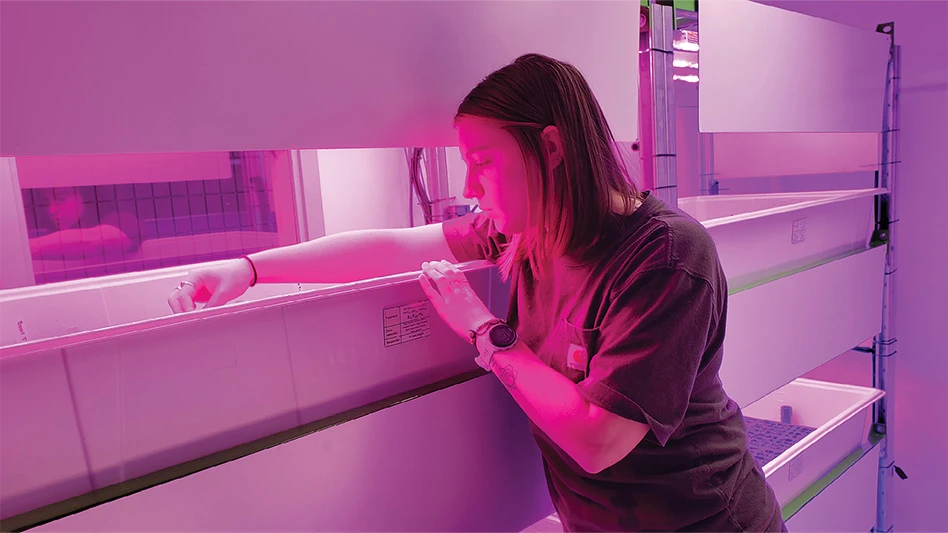

As we wrap up 2018, juggling holiday season family time with end-of-year business, all activities feel tinted with a layer of optimism for the coming year. In our industry, this is always a time for pre-spring planning and hopes for another shot at getting it right. If you got it right in 2018, then I assume you’re hoping for a repeat. If not, then you may be looking to 2019 for redemption.
In either case, it’s always best to start a new year with a full tank. How do you fill up? I like to use this time to dig deep into current plant trends and see what excites me. Right now, I can’t get enough of the resurgence of indoor gardening and houseplants. There’s no denying that social media and small spaces have coupled to inspire hordes of new plant keepers and gardeners. Instagram has become the hub for plant-centric feeds, with users obsessing over houseplants and succulents, how to grow them, and how to use plants to accent and enrich their living spaces.
Now that we finally have some Pilea peperomioides available on the market in the U.S., plant collectors are starting to glance around for the next “it” plant. If you don’t want to have to try and catch up with Instagram for the next big plant obsession, then you might consider taking the wheel to drive the next trend. My call for the next must-have houseplants? Oxalis palmifrons and O. versicolor… or how about any unusual species of Oxalis. It’s handy that Oxalis are already good garden perennials. So would you guys get on that in a hurry please? I had to wait nearly five years for my Pilea!
Living with plants, documented via social media, isn’t just about the photos anymore. Plant collecting is bringing people back together in person. Plant swaps are the new meetup du jour and enthusiasts have started using the hashtag #plantfriendsirl — plant friends in real life. Plant friends! I love it. Amateur plant sales aren’t anything new, but the modern-day plant swap has a much more modern feel than your conventional botanical garden plant sale. It’s super hip to be a plant parent.
I realize that home gardeners propagating and swapping their own plants — whether they’re houseplants, herbs or perennials — might initially rub greenhouse growers the wrong way. Nevertheless, such enthusiasm for making more plants is a seed that grows a lifetime gardener. We all know that people who propagate their own plants usually also buy a lot of plants.
With the explosion in new grow light technology for home gardeners, indoor gardening — beyond low-light houseplants — is also seeing a surge. People really want to grow veggies, fruits and herbs indoors; be it to extend their seasons, cope with physical limitations or because they don’t have any outdoor space. Many customers who are big outdoor gardeners also want the ability to continue their hobby indoors with equal fervor. Again, the key factor here is small space; dwarf vegetable and herb varieties are needed not just for the patio, but also for the indoor garden. Micro-dwarf tomato varieties make me do jazz hands, so I’m excited that more compact edibles are hitting the market.
It’s not just indoor gardeners who need or want to keep it small. Small is in outdoors as well. I find it encouraging that those who can’t or won’t maintain large landscapes anymore don’t want to give up their gardens altogether. Many are renovating their gardens to have a smaller footprint — a footprint that still has big visual impact but is easier to maintain. Customers are spending on compact patio gardens, small space outdoor room gardens, and balcony gardens. I’ve also seen a recent jump in niche backyard vegetable bed installation and maintenance companies popping up (most are women-owned by the way). Rooftops are getting greener. Urban gardens aren’t going anywhere.
Oh, did you know tea — and making homemade teas — is also gaining popularity in the U.S.? Beyond culinary herbs, gardeners have a growing interest in actual tea plants (Camellia sinensis), and other plants with which to make herbal teas. I love this plant trend and I think we could all benefit from a dose of soothing homemade tea these days.
I always tap into my contacts in the floral and cut flower industry to get a pulse on flower color trends. I’m told that purple — 2018’s Pantone Color of the Year (Ultra Violet) is finally catching on. Peach and orange flowers are also gaining popularity and some of my contacts think rusty orange is the next “it” color. Color is in. More customers are also requesting plants with texture, meaning interest beyond the flowers. They want interesting foliage and seed pods, not just pretty flowers. This is great news for plant growers and retailers.
The challenge for the green industry now is to change and modernize at a pace that keeps up with customer expectations and the labor market — not just with the products we offer, but also in how we engage with customers to meet their needs and wants. How we internally run our businesses and the type of company cultures we create also have a big impact on outside perception of the horticulture industry. That’s one area that I hope we will all focus on a bit more seriously in 2019.
There are so many other innovations — both in plants and technology— to get excited about for 2019. The good news is people have a strong desire to be surrounded by plants, no matter their space.

Explore the December 2018 Issue
Check out more from this issue and find your next story to read.
Latest from Greenhouse Management
- CEA Alliance celebrates bipartisan introduction of Supporting Innovation in Agriculture Act
- Dümmen Orange North America celebrating 25th anniversary in 2025
- CEA HERB Part 1: Best management practices for culinary herbs
- Lawsuit challenges new H-2 visa rules
- CEA HERB Part 2: A guide to increasing the sowing density of culinary herbs
- Illinois Landscape Contractors Association changes name to Landscape Illinois
- 2025 Proven Winners Horticulture Scholarship applications now open
- ICL’s Gemini Granular herbicide now registered for use in California







